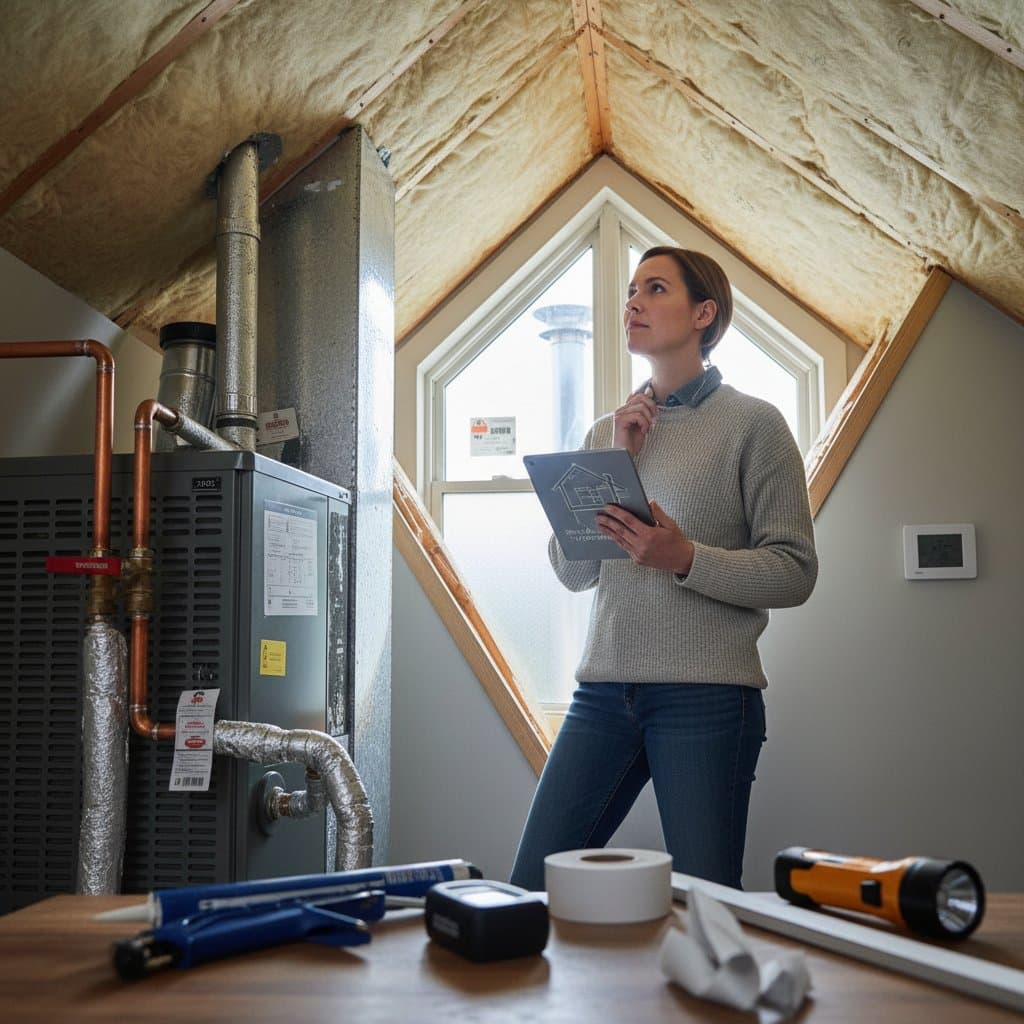Essential Checklist to Winter-Proof Your Home Now
Prepare your home before the first freeze arrives. Winter conditions reveal vulnerabilities in insulation, plumbing, and exterior barriers that result in costly repairs. Follow this structured approach over a few dedicated weekends to secure comfort and reduce expenses during the coldest periods.
Key Areas to Prioritize Before Temperatures Decline
Winter preparation extends beyond securing windows and increasing heat settings. Address each system that shields the home from moisture, drafts, and freezing elements. Begin with these six essential areas.
-
Weatherproof Windows and Doors
Examine edges for drafts by passing your hand along frames where air infiltration seems likely. Replace deteriorated weatherstripping or apply caulk if a breeze is detected. Install window film kits, which cost under twenty dollars per room and cut heat loss by as much as thirty percent. Secure doors with sweeps to close bottom gaps; these measures yield rapid savings on heating expenses. -
Inspect and Insulate Attic and Basement
Warm air ascends, making the attic a primary site of heat escape. Ensure insulation blankets the full area without voids; fiberglass batts or blown-in cellulose provide reliable coverage. In the basement, wrap exposed pipes and unfinished walls to avert condensation and freezing. These steps enhance livability and guard against pipe ruptures. -
Service the Heating System
Regular maintenance optimizes furnace or heat pump performance and extends equipment life. Swap out filters, clear vents, and arrange a professional evaluation. A complete tune-up typically ranges from one hundred to two hundred dollars. This process guarantees safe operation and avoids failures amid severe cold. For aging systems, inquire about upgrades that diminish long-term energy use. -
Protect Exterior Plumbing and Irrigation Lines
Outdoor faucets and irrigation setups face risks when temperatures drop below freezing. Isolate the water supply to external lines and drain faucets by opening them fully. Fit insulated covers over visible spigots and detach hoses. Engage a specialist to clear sprinkler lines using compressed air; this service, priced at seventy to one hundred dollars, thwarts expensive bursts. -
Clean Gutters and Examine the Roof
Blocked gutters foster ice dams that harm shingles and invite indoor leaks. Remove leaves and debris, then rinse downspouts for unobstructed flow. Inspect the roof for absent shingles or compromised flashing near vents and chimneys. Address minor issues promptly to prevent extensive water damage. -
Seal Foundation Gaps and Review Siding
Chilly air enters through minute fissures at the foundation or utility penetrations. Apply expanding foam or durable exterior caulk to close these openings. Survey siding for unsecured panels or impaired trim that permits moisture intrusion. Conduct this review to maintain dry interiors and block winter pests.
Enhance Indoor Comfort and Energy Efficiency
With exterior protections in place, turn attention to interior enhancements. Set ceiling fans to reverse direction, circulating warm air downward. Equip programmable thermostats to modulate temperatures during sleep or absence. Hang thermal curtains on north-facing windows for added insulation. Opt for LED bulbs rated for cold environments to sustain illumination while conserving power.
Conduct Essential Safety Inspections
Heightened dependence on heating in winter amplifies risks from overlooked elements. Verify smoke and carbon monoxide detectors function properly; replace batteries if necessary. Position fire extinguishers within reach and arrange chimney cleaning prior to initial use. Obstructed flues risk smoke accumulation or fires. Place space heaters on stable surfaces, distant from furnishings, drapes, and occupants.
Plan Budget and Seek Professional Assistance
Winterization expenses vary by home size and state. A thorough DIY effort may total five hundred to fifteen hundred dollars. Professional services for heating, insulation, or roofing could elevate costs to three thousand dollars, yet deliver substantial value through prevention.
Implement Practical Strategies
Assemble a maintenance binder to log tasks and retain receipts for tax or insurance benefits. Book inspections ahead, as demand surges with cooling weather. Prepare an emergency kit featuring flashlights, blankets, and water for potential storms. After significant snow or ice, patrol the property to identify strained gutters or iced faucets.
Sustain Seasonal Preparedness
Treat winter-proofing as an ongoing practice. Review this checklist annually, tailoring to local climate variations. Consistent vigilance ensures efficiency, warmth, and resilience against extreme conditions.
